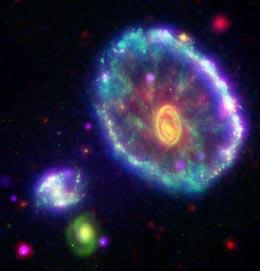 A robot called ADAM can hypothesize, conduct experiments, and plan next steps without human input, researcher Ross King (left) and colleagues announced in April 2009. ADAM is the first—but maybe not the last—robot to make a new scientific discovery. Photograph courtesy Arthur Dafis, Aberystwyth University
A robot called ADAM can hypothesize, conduct experiments, and plan next steps without human input, researcher Ross King (left) and colleagues announced in April 2009. ADAM is the first—but maybe not the last—robot to make a new scientific discovery. Photograph courtesy Arthur Dafis, Aberystwyth University From Financial Post:
A laboratory robot called Adam has been hailed as the first machine in history to have discovered new scientific knowledge independently of its human creators.
Adam formed a hypothesis on the genetics of bakers’ yeast and carried out experiments to test its predictions, without intervention from its makers at Aberystwyth University.
The result was a series of “simple but useful” discoveries, confirmed by human scientists, about the gene coding for yeast enzymes. The research is published in the journal Science.
Professor Ross King, the chief creator of Adam, said robots would not supplant human researchers but make their work more productive and interesting.
Read more ....
More News On This Robot First
Robot scientist 'Adam' solves genetic problems -- Times Online
First Robot Scientist Makes Gene Discovery -- National Geographic
Self-directed robot scientist makes discovery -- MSNBC
Robot Scientist Becomes First Machine To Discover New Scientific Knowledge -- Science Daily
Robot Makes Scientific Discovery All by Itself -- Wired Science
Robot scientist makes discoveries with no human help -- New Scientist
Job Swap: This Robot Is the Scientist -- Live Science


















